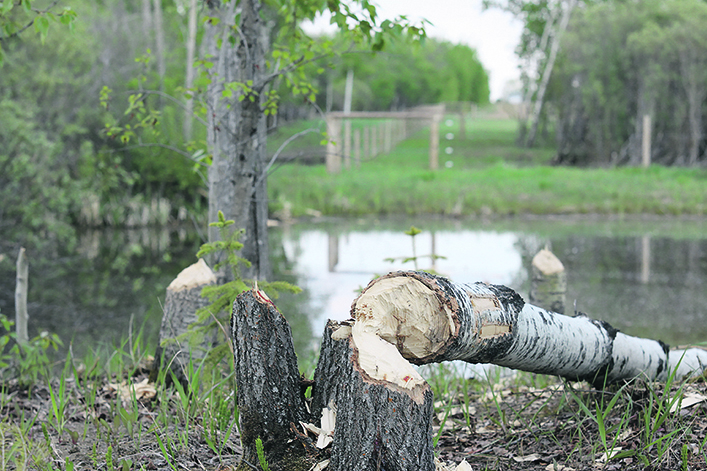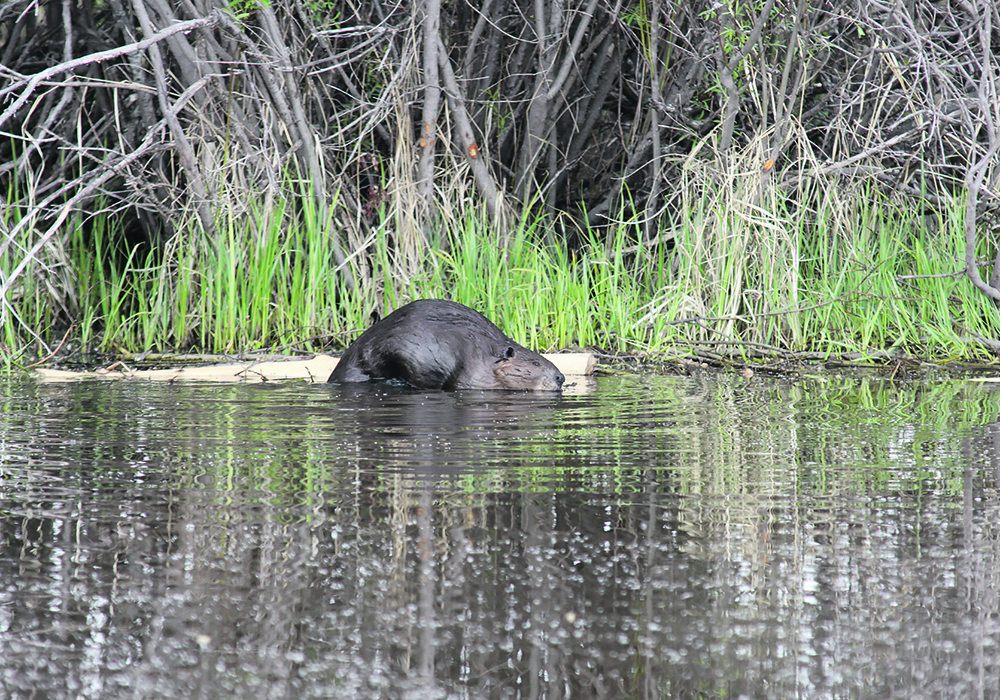The animals can significantly increase open water, raising the water table and making more of it available to vegetation
For higher water retention, erosion control, greater biodiversity, increased pollinators, fire resilience and more vital land systems, farmers might consider looking to the beaver.
“There are many cost-effective strategies to manage the two f-words — flooding and foraging — when it comes to beavers,” says Kirby England, faculty instructor at Lethbridge College’s School of Environmental Sciences.
The biologist has spent most of his professional life learning about Castor canadensis, the iconic native rodent that once ranged as far north as the permafrost and as far south as the American southwest. When it comes to beavers, he says, coexistence is the most beneficial option.
In drought-prone areas, increasing the water-holding capacity of land due to surrounding beaver installations is a primary benefit to landowners, says England.
From dams to lodges to excavated canals, beaver activity can lead to a nine-fold increase in open water, raising the water table and making more water available to vegetation over a larger area and increasing the amount of time water spends in the flood plain.
But the water you see is only part of the story, says Daniel Karran, an ecohydrolgist with Olds College’s Agricultural Technology faculty.
“If you’ve got beaver dams on your land, you have sources of water you can tap into,” he says.
“There is evidence that beavers recharge aquifers. The majority of late-season stream flow is groundwater. With those aquifers, there can be a constant flow of water between the beaver ponds and the aquifer, recharging that ground water. There’s definitely more water than you see.”
“The more water we have on the landscape, the more sustainable our agriculture will be.”
Farmers and ranchers can also count on the beavers’ natural behaviours to work as a kind of fire break. In a study by Emily Fairfax published in April 2022, systems that have been impacted by beavers contained slower-moving water and held less flammable material. With saturated ground, open water and less to burn, beavers helped to mitigate fire damage by providing green buffer zones to slow or stop the spread of fire across the landscape.

When it comes to erosion, beavers change the shape of stream edges and bottoms. From steeply-sided, V-shaped torrents with rapidly-moving flows that accelerate erosion, to wider, slower and shallower bodies, beaver activity allows vulnerable species — like northern leopard frogs, waterfowl and certain species of trout — to thrive.
Practising good “field hygiene” around the water ways, stream edges and pools that beavers shape is critically important, says England. Keeping hoofs out of water is a message his colleagues at Cows and Fish, Alberta’s riparian habitat management society, has been telling people for years.
“Hoof rot comes down to pasture management,” he says.
He also notes that beaver fever isn’t caused by beavers at all, but by the presence of giardia in water, which is often caused by pastured cows.
“Beavers will change the watershed,” says England. “They are more stable when beavers have been present. They build riparian foundations and improve sediment load in waterways — 382 tandem dump truck loads of sediment can be held behind dams with 50 to 70 percent less suspended solids and 23 percent carbon sequestered.”
Once numbering in the millions, beavers were trapped extensively with the arrival of European colonists and were down to just 30,000 animals at one point. The beaver has been on Canadian nickels since 1937, appeared on the first Canadian stamp and is a central figure in many Indigenous creation stories.















